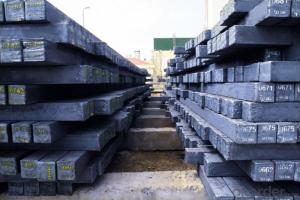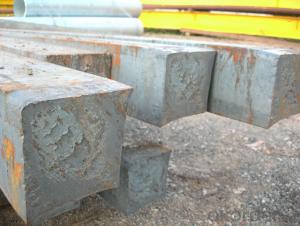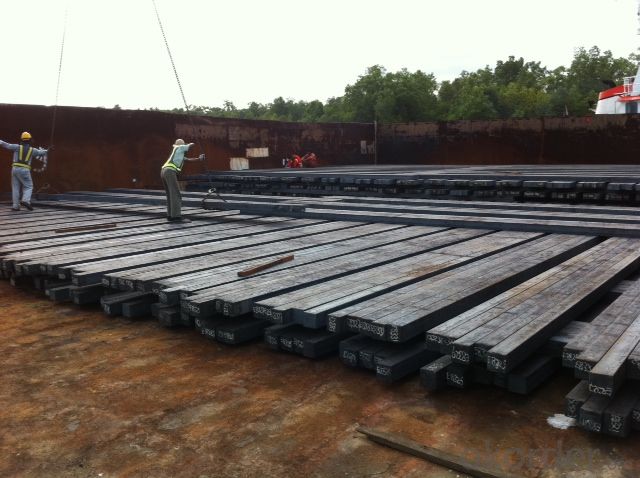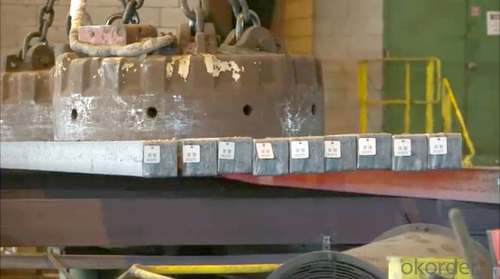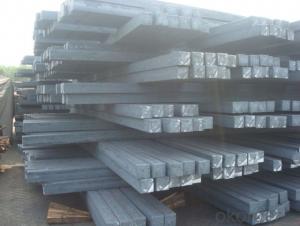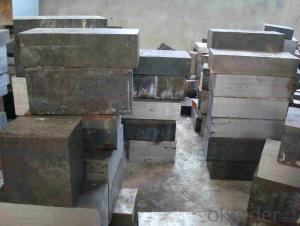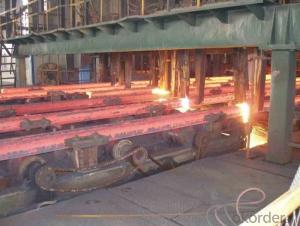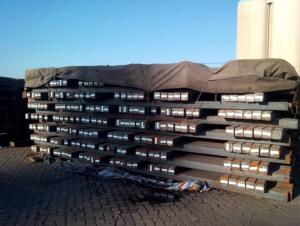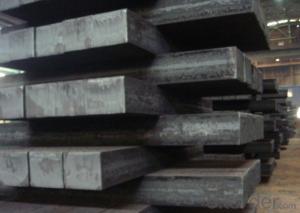Z40 BMP Rolled Steel Coil Construction Roofing Construction
- Loading Port:
- Tianjin
- Payment Terms:
- TT OR LC
- Min Order Qty:
- 100 m.t.
- Supply Capability:
- 10000 m.t./month
OKorder Service Pledge
OKorder Financial Service
You Might Also Like
Structure of Z40 BMP Rolled Steel Coil Construction Roofing Construction 
Description of Z40 BMP Rolled Steel Coil Construction Roofing Construction
PPGI is made by cold rolled steel sheet and galvanized steel sheets as baseplate, through the surface pretreatment (degreasing, cleaning, chemical conversion processing), coated by the method of continuous coatings (roller coating method),
and after roasting and cooling. Zinc coating: Z60, Z80, Z100, Z120, Z180, Z275, G30, G60, G90
Alu-zinc coating: AZ60, AZ80, AZ100, AZ120, AZ180, G30, G60, G90

Main Feature of Z40 BMP Rolled Steel Coil Construction Roofing Construction
1) Excellent corrosion resistance: The zinc layer provides a good protection of Pre-painted Galvanizeed Steel Sheet.
2) High heat resistance: The reflective surface of the material aids in efficiently reflecting the sunlight away and in turn reducing the amount of heat transmitted. The thermal reflectivity converts into energy savings.
3) Aesthetics: Pre-Painted Galvanized steel sheet is available in plethora of patterns and multiple sizes as per the requirements that given by our customers.
4) Versatility: can be used in the various areas.Standard seaworthy export packing: 3 layers of packing, inside is kraft paper, water plastic film is in the middle and outside GI steel sheet to be covered by steel strips with lock, with inner coil sleeve.
Applications of Z40 BMP Rolled Steel Coil Construction Roofing Construction
1. Construction and building: roofing; ventilating duct; handrail; partition panel;etc.
2. Electric appliance: refrigerator; washing machine; refrigerator; DVD;etc.
3.Transportation: oil tank; road sign; etc.
4.Agriculture:barn; etc.
5.Others:vending machine; game machine; etc.  Specifications of Z40 BMP Rolled Steel Coil Construction Roofing Construction
Specifications of Z40 BMP Rolled Steel Coil Construction Roofing Construction
| Classified symbol | Yield Point Minimum N/mm2 | Tensile Strength Minimum | Elongation Minimum % | Application | ||||
| N/mm2 | Nominal Thickness mm (t) | |||||||
| JIS | Yogic | 0.25-0.4 | 0.4-0.6 | 0.6-1.0 | 1.0-1.6 | |||
| G3312 | specification | |||||||
| CGCC | CGCC | -205 | -270 | -20 | -21 | -24 | -24 | Commercial |
| CGCD | CGCD | --- | 270 | --- | 27 | 31 | 32 | Drawing |
| --- | CG340 | 245 | 340 | 20 | 20 | 20 | 20 | Structural |
| CGC400 | CG400 | 295 | 400 | 16 | 17 | 18 | 18 | Structural |
| CGC440 | CG440 | 335 | 440 | 14 | 15 | 16 | 18 | Structural |
| CGC490 | CG490 | 365 | 490 | 12 | 13 | 14 | 16 | Structural |
| CGC570 | CG570 | 560 | 570 | --- | --- | --- | --- | Structural |
| ASTM Designation | Yield Point Minimum | Tensile Strength Minimum | Elongation Minimum % | Application | Q/BQB 445-2004(China standard) | ASM A653/A653M | JISG 3312 | |
| ksi(MPa) | ksi(MPa) | TDC51D+Z | (CS TYPE A+Z) | CGCC | ||||
| A653(M)-99 CS TYPE A,B,C | --- | --- | --- | Commercial | TDC52D+Z | CGCD | ||
| A653(M)-99 FS | --- | --- | --- | Lock Forming | TS250GD+Z | (G250+Z) | - | |
| A653(M)-99 DS | --- | --- | --- | Drawing | TS300GS+Z | (G300+Z) | CGC 400 | |
| A653(M)-99 SS Grade33(230) | 33(230) | 45(310) | 20 | Structural | TS350GD+Z | (G350+Z) | CGC490 | |
| A653(M)-99 SS Grade37(255) | 37(255) | 52(360) | 18 | Structural | TS550GD+Z | (G550+Z) | CGC570 | |
| A653(M)-99 SS Grade40(275) | 40(275) | 55(380) | 16 | Structural | ||||
| A653(M)-99 SS Grade50(345) | 50(345) | 65(450) | 12 | Structural | ||||
| A653(M)-99 SS Grade80(550) | 80(550) | 82(570) | --- | Structural | ||||
FAQ of Z40 BMP Rolled Steel Coil Construction Roofing Construction
We have organized several common questions for our clients,may help you sincerely:
1. How Can I Visit There?
Our company is located in Tianjin City, China, near Beijing. You can fly to Tianjin Airport Directly. All our clients, from home or aboard, are warmly welcome to visit us!
2. How Can I Get Some Sample?
We are honored to offer you sample.
3. Why choose CNBM?
1, ISO, BV, CE, SGS approved.
2, Competitive price and quality.
3, Efficient service team online for 24 hours.
4, Smooth production ability(50000tons/month) .
5, quick delivery and standard exporting package.
6, Flexible payment with T/T, L/C, Paypal, Kunlun bank, etc .
- Q: What is the average lifespan of a steel billet in the automotive industry?
- Various factors can affect the average lifespan of a steel billet in the automotive industry. Generally, these billets serve as raw materials for producing automotive parts like engine components, chassis, and body structures. These parts are designed to last as long as the vehicle itself, which can be anywhere from 10 to 20 years or more. The specific lifespan of a steel billet in the automotive industry depends on its application and the level of stress or wear it experiences during its service. For example, engine components such as crankshafts or connecting rods may undergo higher levels of stress and wear due to the combustion process, which may require replacement or refurbishment after a certain period. Furthermore, advancements in material science and manufacturing technologies have resulted in the creation of stronger and more durable steel alloys, thus increasing the lifespan of automotive parts. When combined with regular maintenance and proper vehicle usage, these advancements contribute to the longevity of steel billets used in the automotive industry. It is important to consider that other factors, such as corrosion, environmental conditions, and manufacturing quality, can also influence the lifespan of a steel billet. To ensure the longevity and reliability of their products, manufacturers and automotive companies prioritize quality control measures. In conclusion, although the specific lifespan of a steel billet in the automotive industry may vary, it is generally designed to last as long as the vehicle itself, which can range from several years to multiple decades. Advances in materials and manufacturing techniques improve the durability and overall performance of steel billets, ensuring their longevity in automotive applications.
- Q: How are steel billets manipulated during the manufacturing process?
- Steel billets are manipulated during the manufacturing process through various methods such as heating, rolling, forging, and cutting. Heating the billets makes them more malleable and easier to shape. Rolling involves passing the heated billets through a series of rollers to reduce their thickness and create desired shapes. Forging is another technique where the billets are shaped using compressive forces. Finally, cutting is done to obtain specific lengths or shapes required for further processing or fabrication.
- Q: How are steel billets used in the manufacturing of furniture?
- Furniture manufacturing commonly utilizes steel billets as the primary material for various components. These billets undergo heating and molding processes to take on different shapes, ultimately forming the structural framework of chairs, tables, and bed frames. The use of steel in furniture production is preferred due to its malleability and strength, which contribute to the durability and stability of the final product. Furthermore, steel billets can be easily welded and joined together, allowing for the creation of intricate designs and structures. In summary, steel billets play a crucial role in the manufacturing of high-quality and long-lasting furniture pieces, providing the necessary strength and versatility.
- Q: How are steel billets handled during transportation?
- Steel billets are typically handled with great care during transportation to ensure their safety and prevent any damage. They are usually transported using specialized equipment such as cranes, forklifts, or conveyors. These tools are used to lift and move the heavy billets from one location to another. Before transportation, the billets are often bundled or secured together to prevent them from shifting or falling during transit. This bundling process can involve using steel straps or bands to hold the billets tightly together, ensuring they remain stable and intact during transportation. In addition to securing the billets, protective measures are often taken to prevent any external damage. For instance, the billets may be covered with protective coatings, such as oil or rust inhibitors, to shield them from moisture or corrosion. This is particularly important when transporting billets over long distances or in adverse weather conditions. During transportation, the billets are carefully loaded onto trucks, trains, or ships, depending on the destination. Special attention is given to balancing the weight distribution to prevent any imbalance or tipping during transit. The transportation vehicles used are designed to handle heavy loads and often have mechanisms in place to secure the billets further, such as straps, latches, or containers. While in transit, the vehicles carrying the steel billets are driven or operated with caution to minimize any sudden movements or impacts. Drivers may need to follow specific routes or speed limits to ensure a smooth and safe journey. Regular inspections and maintenance of the transportation vehicles are conducted to ensure their reliability and prevent any mechanical failures that could jeopardize the safety of the billets. Overall, the transportation of steel billets involves a combination of careful planning, secure bundling, protective measures, and safe handling techniques. These practices aim to safeguard the billets and ensure they reach their destination in optimal condition, ready for further processing or use in various industries.
- Q: What are the different types of steel billet casting methods?
- There are several different methods used for steel billet casting, each with its own advantages and applications. The most commonly used methods include continuous casting, static casting, and centrifugal casting. 1. Continuous Casting: This is the most widely used method for steel billet casting. In this process, molten steel is poured into a water-cooled mold, where it solidifies into a continuous strand. The strand is then cut into desired lengths by a cutting machine. Continuous casting allows for high production rates and consistent quality, making it ideal for mass production of steel billets. 2. Static Casting: Also known as ingot casting, this method involves pouring molten steel into a stationary mold, where it solidifies into a solid billet. The mold is typically made of sand or metal, and the solidification process can be controlled to obtain desired properties. Static casting is often used for smaller production runs or when specific alloy compositions or shapes are required. 3. Centrifugal Casting: This method utilizes centrifugal force to distribute molten steel evenly within a rotating mold. As the mold spins, the molten steel is pushed towards the mold walls, resulting in a uniform casting with improved density and mechanical properties. Centrifugal casting is commonly used for large and complex billets, such as those used in pipe manufacturing or turbine components. These are the main methods used for steel billet casting; however, there may be variations or combinations of these methods depending on specific requirements or technological advancements.
- Q: What is the role of steel billets in the automotive industry?
- Steel billets are of utmost importance in the automotive industry as they are crucial in the production of various vehicle components and parts. Essentially, steel billets are semi-finished steel products that undergo further processing to achieve the desired shape and size necessary for automotive applications. One primary application of steel billets in the automotive sector is in the production of engine and transmission components. These components, including crankshafts, connecting rods, camshafts, gears, and others that require high strength and durability, rely on steel billets as raw material for forging or casting. This ensures that they can withstand the demanding conditions of engine operation. Another significant use of steel billets in the automotive industry is for the manufacturing of structural components. These components, such as chassis frames, suspension parts, and body panels, need to possess high strength and stiffness to provide safety and rigidity to the vehicle. Steel billets undergo various techniques like hot rolling, cold rolling, or extrusion to produce the necessary forms and shapes required for these structural components. Furthermore, steel billets are also employed in the production of essential fasteners like bolts, nuts, and screws, which are crucial for assembling different parts of the vehicle. These fasteners must possess excellent tensile strength and resistance to vibration and corrosion, making steel billets an ideal choice for their manufacture. Additionally, steel billets find application in the production of various other automotive components, including axles, wheel hubs, brake discs, and steering system parts. All these components require the superior mechanical properties offered by steel billets, such as high strength, toughness, and resistance to wear and tear. In conclusion, steel billets play a vital role in the automotive industry as they serve as raw material for the production of engine and transmission components, structural components, fasteners, and other crucial parts. Their exceptional mechanical properties make them an ideal choice for applications that demand high strength, durability, and reliability, ensuring the safety and performance of vehicles on the road.
- Q: How are steel billets inspected for defects?
- Steel billets are inspected for defects through a series of thorough and systematic processes to ensure the quality and integrity of the final product. The inspection methods used may vary depending on the specific requirements and standards of the industry, but generally, the following techniques are commonly employed: 1. Visual Inspection: Skilled inspectors visually examine the surface of the billets for any visible defects such as cracks, surface irregularities, seams, or any other abnormalities. This is the initial step to identify any obvious defects that may affect the quality of the billets. 2. Magnetic Particle Testing (MPT): MPT is a non-destructive testing method that utilizes magnetic fields and iron particles to detect surface and near-surface defects in steel billets. The billets are magnetized, and iron particles are applied to the surface. If there are any defects, the magnetic field will cause the particles to cluster around them, making them visible to the inspector. 3. Ultrasonic Testing (UT): UT uses high-frequency sound waves to inspect the internal structure of steel billets. A probe is used to transmit ultrasonic waves into the billet, and the reflected waves are analyzed to determine the presence of any internal defects like voids, inclusions, or cracks. 4. Eddy Current Testing (ECT): This technique uses electromagnetic induction to identify surface and subsurface defects. A probe is used to create eddy currents within the billet, and any disruptions caused by defects will alter the electrical conductivity, which can be detected and analyzed. 5. Radiographic Testing (RT): RT involves the use of X-rays or gamma rays to inspect the internal structure of steel billets. The billets are exposed to radiation, and the resulting image is examined for any internal defects such as cracks, voids, or inclusions. 6. Ultrasonic Phased Array Testing (PAUT): PAUT utilizes multiple ultrasonic beams to inspect the entire volume of the billet. This technique allows for better defect detection and sizing by controlling the beam angle, frequency, and focus. These inspection methods are typically performed at various stages of the manufacturing process, including before and after the billets are heated, rolled, or further processed. By implementing these rigorous inspection techniques, manufacturers can identify and address any defects early on, ensuring the quality and reliability of the steel billets.
- Q: How are steel billets used in the manufacturing of oil and gas pipelines?
- Steel billets are an essential raw material in the manufacturing of oil and gas pipelines. They are heated and shaped into seamless or welded pipes, providing the structural strength necessary for the transportation of oil and gas over long distances. The billets undergo various processes, such as hot rolling, piercing, and elongation, to achieve the desired pipe dimensions and mechanical properties. Ultimately, steel billets serve as the foundation for the production of durable and reliable pipelines that play a crucial role in the energy industry.
- Q: What are the different surface treatments available for steel billets?
- There are several surface treatments available for steel billets, including shot blasting, pickling, phosphating, and galvanizing. Shot blasting involves propelling abrasive materials at high speeds to remove rust and scale from the surface. Pickling involves immersing the billets in an acid solution to remove oxide layers and impurities. Phosphating applies a layer of phosphate coating to enhance corrosion resistance and improve paint adhesion. Galvanizing involves applying a zinc coating to protect the surface from corrosion.
- Q: How are steel billets used in the manufacturing of power transmission towers?
- Steel billets are used in the manufacturing of power transmission towers as they are heated and shaped into various sections and components, such as angles, channels, and plates. These billets serve as the raw material that is further processed and welded together to create the sturdy and durable structure of power transmission towers, ensuring their stability and ability to withstand heavy loads and extreme weather conditions.
Send your message to us
Z40 BMP Rolled Steel Coil Construction Roofing Construction
- Loading Port:
- Tianjin
- Payment Terms:
- TT OR LC
- Min Order Qty:
- 100 m.t.
- Supply Capability:
- 10000 m.t./month
OKorder Service Pledge
OKorder Financial Service
Similar products
Hot products
Hot Searches
Related keywords

